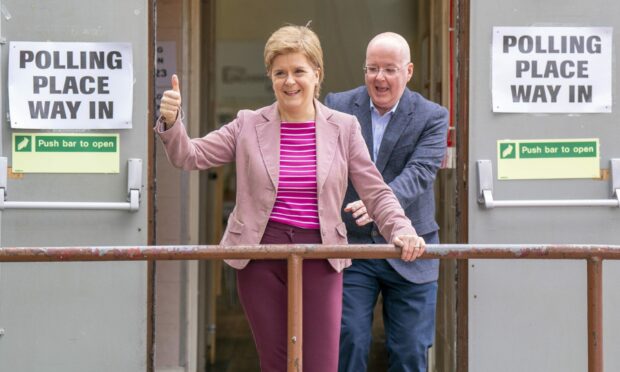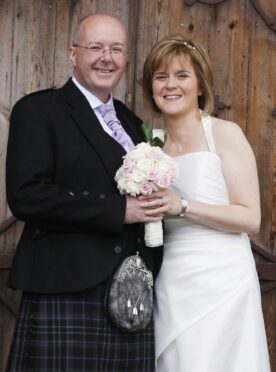Scotland’s political power couple, Nicola Sturgeon and Peter Murrell, transformed the SNP, leading the party to record successes over multiple elections.
On the morning of April 5, Mr Murrell was arrested in connection with a police probe into party finances.
Who is the man credited with transforming the SNP?
Becoming the SNP power couple
Mr Murrell has never been an elected politician but his role as chief executive of the party since 1999 made him one of the most influential figures in Scottish politics.
He met Nicola Sturgeon through their work with the SNP in the late 1980s, and were first said to be in a relationship in early 2003.
They married at a ceremony in Glasgow in summer 2010.
At the time, he had already been SNP chief for 11 years and she was deputy first minister in a government led by her mentor Alex Salmond.
Mr Murrell had previously worked Mr Salmond’s Banff and Buchan constituency office.
The SNP won power as a minority government in 2007, often attributed to Mr Murrell’s organisational skills, and made huge electoral gains in the 2011 election.
After Mr Salmond’s resignation in 2014 following the result of the independence referendum, Ms Sturgeon was elected unopposed as successor.
Questions were raised at the time about the close working and personal relationship between husband and wife, but they insisted there was a strict division of power within the party’s governance.
The pair were reportedly told by the departing SNP leader in 2014 that she could not lead the party while Mr Murrell was chief executive but chose to ignore that advice.
Ms Sturgeon denied that becoming Scotland’s ultimate political power couple would be detrimental to the party, stating: “I’m comfortable there are no issues that arise.”
Why did Peter Murrell resign?
When Ms Sturgeon announced her decision to resign as first minister in February, it seemed inevitable her husband would also have to leave.
That pressure increased as two of the three candidates to replace her publicly questioned the integrity of the leadership contest.
But it was a row over party membership numbers that led to his resignation – shortly after the departure of the SNP’s communications chief Murray Foote.
The SNP went from fewer than 25,000 members before the independence referendum to more than 125,000 by December 2019.
But it long refused to answer questions about what happened to membership numbers after that.
Following sustained question from the media and candidates in the leadership race, the party revealed membership as of February 15 this year was 72,186, having fallen from 103,884 in 2021.
This corroborated published reports around the SNP losing 30,000 members, something Mr Foote strongly denied at the time.
He said that after speaking to the party’s HQ, he issued responses to the media which had “serious issues” and later decided there was a “serious impediment” to his role.



